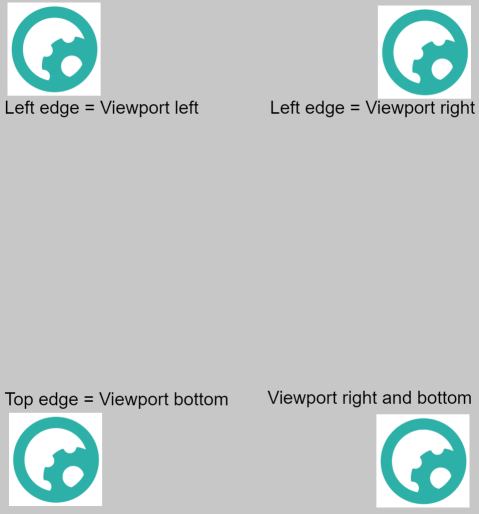The Anchor behavior is useful for automatically positioning objects relative to the viewport. This is useful for supporting multiple screen sizes.
Objects using the Anchor behavior should also be placed on a layer with its parallax set to 0% x 0%. Otherwise as the game scrolls the objects may "lag" behind the screen.
Scripting
When using JavaScript or TypeScript coding, the features of this behavior can be accessed via the IAnchorBehaviorInstance script interface.
Positioning objects relative to the viewport
In the top-left of the Layout View, a dotted outline represents the viewport. Anchored objects should be positioned inside the dotted viewport area, as shown below.
 Positioning anchored objects in the layout
Positioning anchored objects in the layoutNow if the window is resized during preview, the objects maintain their relative positions, as shown below. Note this demo uses Scale outer fullscreen mode to allow the aspect ratio to change.
 Anchored objects in preview
Anchored objects in previewThis is useful for interface elements like notifications and heads-up displays (HUDs).
Relative positioning
The Left edge and Top edge position the object relative to the viewport edges, without changing the object size. For example, if the Left edge is set to Viewport right, the object will always stay the same distance from the right edge of the viewport.
The Right edge and Bottom edge resize the object relative to the viewport edges. For example, if you want a Tiled Background to stretch wider as the window widens, set Right edge to Viewport right.
Anchor conditions
- Is enabled
- Test if the behavior is currently enabled. When disabled it will have no effect on the object.
Anchor actions
- Set enabled
- Set whether the behavior is enabled or disabled. If disabled, the behavior will not alter the size or position of the object.
Anchor expressions
The Anchor behavior has no expressions.